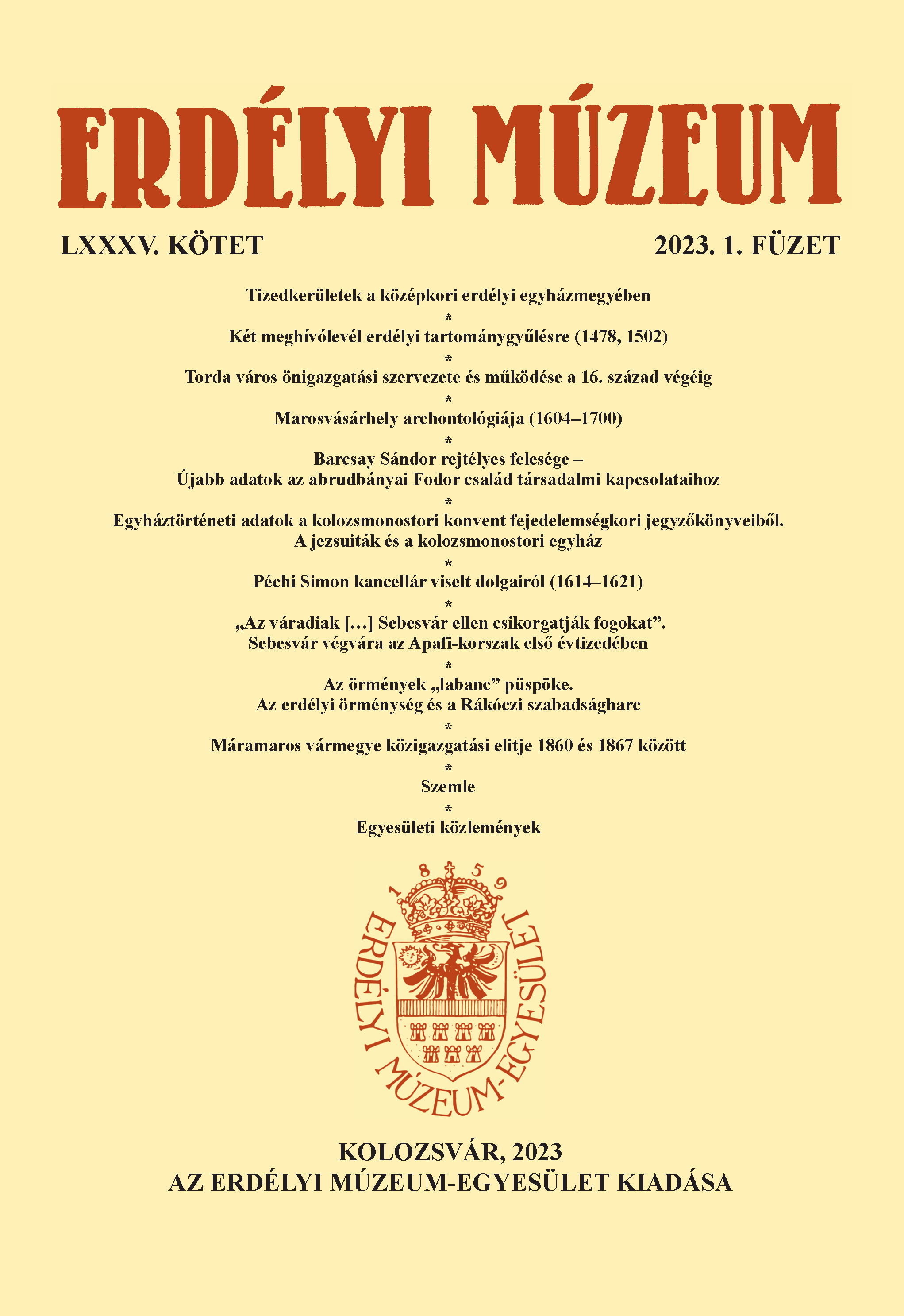Torda város önigazgatási szervezete és működése a 16. század végéig
The Self-governing Structure of Turda/Torda and Its Activity until the End of the 16th Century
Author(s): Bálint LakatosSubject(s): Cultural history, Local History / Microhistory, 15th Century, 16th Century
Published by: Erdélyi Múzeum-Egyesület
Keywords: local government; town charters; judge; council; notary; seal
Summary/Abstract: The self-government organisation of Turda/Torda in the 15th-16th century can only be deduced from sporadic sources due to the decay of the town archives in 1601. We know only 31 issues between 1424 and 1599. Although the town consisted of two quarters (Old and New Town), it was led by one inner council of one judge and twelve jurors before 1619. According to their privileges, they were freely elected annually. It is not possible to determine the exact date of the elections until the second half of the 16th century, then it was probably around New Year’s Day or Epiphany. The election was made by the “fifty men”, the external council. The written administration was carried out by the notary, who also wrote the town book. This office is recorded from 1411, the town book is mentioned in 1535. Other town officials (forest judge, wine judge, ward of the vineyards, lake judge) are only recorded from the very end of the 16th century. The weekly sessions of the inner council were held on Mondays–Tuesdays and on Fridays–Saturdays. In the case of real estate matters, charters were often issued on 24 December or on the vigil of Pentecost (“sealing day”). Torda used a single seal until the end of the 15th century, then a larger and a smaller one. The coat of arms was a variant of the Hungarian royal coat of arms with red and silver cut. This was forgotten by the 17th century.
Journal: Erdélyi Múzeum
- Issue Year: LXXXV/2023
- Issue No: 1
- Page Range: 19-52
- Page Count: 34
- Language: Hungarian

